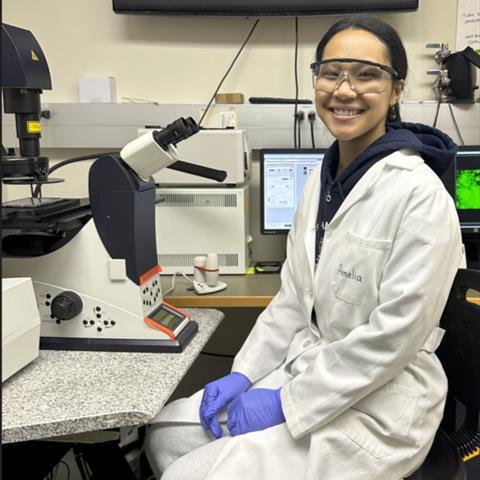Amelia Rohim reports back on her AMI-sponsored summer studentship which focused on the investigation of inter-species aggregation between oral bacteria at the University of Michigan with Dr. Alexander Rickard.

My name is Amelia Julia Rohim, and I am a 20-year-old undergraduate student from Ann Arbor, Michigan (USA). I am currently studying Biology, Health, and Society with a minor in Business on a pre-dental track at the University of Michigan in the College of Literature, Science, and the Arts.
READ MORE: Can the ‘good’ bacteria in your mouth act as probiotic cavity fighters?
READ MORE: Late nights and long days in the lab - but today was a chance to shine
I was conducting my placement at the School of Public Health at the University of Michigan with Dr. Alexander Rickard. My project focuses on the investigation of inter-species aggregation between oral bacteria.
During this placement, I have been able to further develop my honors thesis research, which examines the aggregation of Streptococci with other commensal oral bacteria.
Biofilms and human health
The aim of my lab’s work is to understand how biofilm development influences human health. By examining the interactions of other oral bacteria, this research seeks to reveal how microbial communities contribute to disease processes, such as dental caries and periodontal disease. This will further provide insights that may guide future prevention and treatment strategies.
Ultimately my work has generated some really exciting findings even though there were some bumps in the road. My work required a lot of troubleshooting. One of my realizations that was unexpected was how scientific protocols need to be carefully considered. For example, several trials showed inconsistent results which was due to a subtle change in protocol.
Microbial interactions
Understanding how oral bacteria interact with each other could play a key role in developing novel strategies to prevent oral disease such as dental caries. By examining these microbial interactions, we can gain a deeper understanding of the factors that either enhance or inhibit cariogenic activity. Such insights not only help identify the underlying mechanisms that contribute to dental caries but also point toward potential strategies for prevention and intervention.
My least favorite job in the lab is making media because it tends to be tedious and time-consuming. However, the process has taught me patience, attention to detail, and the importance of time management.
Thanks to the AMI Summer Studentship Grant I have learned more skills that will enable me to further complete my honors thesis. Moving forward, I intend to take a deeper look at biofilm development, focusing not only on how oral bacteria grow together but also on how their interactions might contribute to broader patterns of oral health and disease.
Find out more about AMI’s grants.







No comments yet